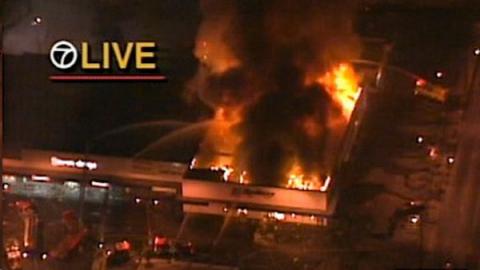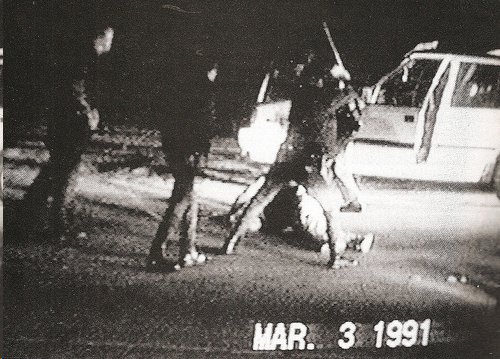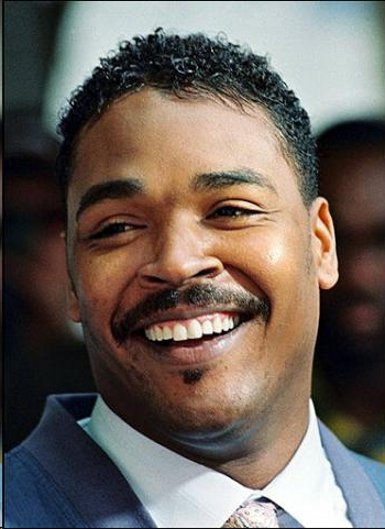20 Years Ago: A Look Back at the Los Angeles Riots

From New America Media:
Editor’s Note: The following commentary is written by Stewart Kwoh, the president and executive director of the Asian Pacific American Legal Center, the nation’s largest Asian-American legal and civil rights organization that serves more than 15,000 individuals and organizations each year.
Sunday, April 29 marked the 20th anniversary of the Los Angeles civil unrest -- the day in 1992 that community outrage erupted hours after a jury’s unjust acquittal of four Los Angeles Police Department (LAPD) officers who severely beat an African-American motorist, Rodney King. Fifty-four individuals died during the six days of unrest. Another 2,400 were injured. Businesses were looted and destroyed, resulting in an estimated $1 billion dollars in property damage. About half of the damage occurred to Korean-owned businesses.
The rioting as an expression of community anger and despair was not a surprise. The videotaped beating of motorist Rodney King was broadcast on news outlets internationally and reinforced distrust of the LAPD among local communities of color. Racial profiling and excessive force were common and longstanding accusations levied against the LAPD.
We had hoped for justice: guilty verdicts that would hold accountable the accused LAPD officers, and their department, for beating King. But as the verdicts illustrated, justice is often thwarted. Residents in impoverished communities in South Los Angeles, which had suffered from decades of economic despair and racial discrimination, expressed their anger at persistent social and economic inequalities by engaging in looting and violence that some have called an uprising.

Years of tense race relations in Los Angeles played out during those six days of rioting. The anger of some individuals was directed at certain communities, but overall, the violence did not target a specific institution or group. Both Korean-American and African-American businesses were looted. But existing tensions and cultural misunderstandings between African-American residents and Korean small business owners were exacerbated by the LAPD’s ineffectiveness during the rioting and the lack of city human relations resources.
Media outlets also sensationalized coverage of the unrest, showing images of Korean business owners wielding guns outside their stores. In actuality, police left them unprotected and with few other options. Not until several community leaders challenged the lack of Asian-American journalists in newsrooms did these outlets, such as the Los Angeles Times, hire Asian-American staff and improve their coverage.
It was evident that the institutions meant to support the city – both governmental and community agencies -- were too weak to quell the anger. Prior to the unrest, as a board member of the Los Angeles Human Relations Commission, I had asked the city to hire more human relations professionals because we feared an “explosion.” Like others, I sensed increased racial tensions in the community, especially after the March 1991 fatal shooting of Latasha Harlins, an African-American teenager, by a Korean business owner. However, new commission staff wasn’t hired until two years after the unrest.
Cross-racial collaborations existed but received scant funding or attention. APALC founded Leadership Development in Interethnic Relations, which emphasized intergroup collaboration training. The Southern Christian Leadership Conference/Martin Luther King Dispute Resolution Center and the League of United Latino American Citizens also came on as formal partners.

Collaborations such as LDIR did flourish, but the magnitude of the problems has made it difficult to make major gains. While we have made improvements in the past two decades, that effort is threatened when police engage in racial profiling. And while race relations have improved in communities, given how our neighborhoods have become more multicultural, we continue to see racial tensions among groups.
Economic opportunity remains elusive, as we see continued income inequity and education cuts taking a toll on our communities. The African-American unemployment rate in Los Angeles is approximately 20 percent, while small businesses, including those owned by Asian-American immigrants, have been especially hard hit by the economic downturn.
Today, nonprofit organizations that serve our communities suffer due to the economic downturn. Foundations need to invest more in the leadership and capacity building of these organizations in order to ensure the well-being of the city.
I hope never again to see Los Angeles fall victim to the violence, anger, and terror that ensued in our communities on April 29, 1992. That is why civic and community leaders need to continue public and private collaborations and work together to revitalize the city’s urban core. Leaders need to seek out new investment capital to boost our neighborhoods….
Many efforts will help ensure that the city is never torn apart by such violence and anger. Today and moving forward, if we continue to work together to make our communities stronger, Los Angeles will be headed to a better future.
Photos: KABC; George Holliday video clip; Wikipedia




























































































































































































































































































































